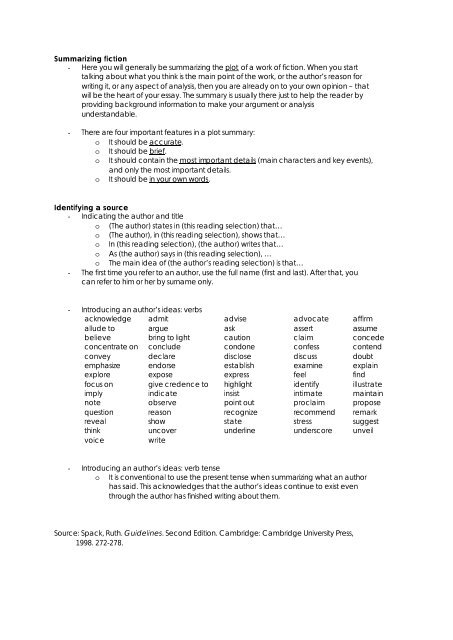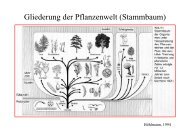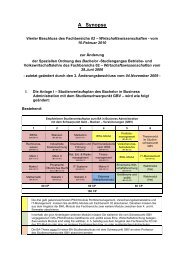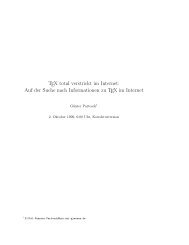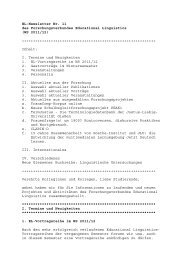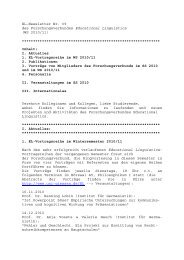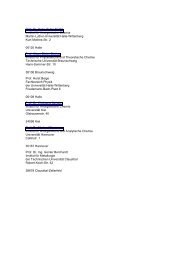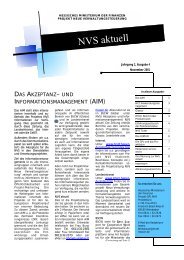Writing Summaries
Writing Summaries
Writing Summaries
You also want an ePaper? Increase the reach of your titles
YUMPU automatically turns print PDFs into web optimized ePapers that Google loves.
Summarizing fiction<br />
- Here you will generally be summarizing the plot of a work of fiction. When you start<br />
talking about what you think is the main point of the work, or the author’s reason for<br />
writing it, or any aspect of analysis, then you are already on to your own opinion – that<br />
will be the heart of your essay. The summary is usually there just to help the reader by<br />
providing background information to make your argument or analysis<br />
understandable.<br />
- There are four important features in a plot summary:<br />
o It should be accurate.<br />
o It should be brief.<br />
o It should contain the most important details (main characters and key events),<br />
and only the most important details.<br />
o It should be in your own words.<br />
Identifying a source<br />
- Indicating the author and title<br />
o (The author) states in (this reading selection) that…<br />
o (The author), in (this reading selection), shows that…<br />
o In (this reading selection), (the author) writes that…<br />
o As (the author) says in (this reading selection), …<br />
o The main idea of (the author’s reading selection) is that…<br />
- The first time you refer to an author, use the full name (first and last). After that, you<br />
can refer to him or her by surname only.<br />
- Introducing an author’s ideas: verbs<br />
acknowledge admit advise advocate affirm<br />
allude to argue ask assert assume<br />
believe bring to light caution claim concede<br />
concentrate on conclude condone confess contend<br />
convey declare disclose discuss doubt<br />
emphasize endorse establish examine explain<br />
explore expose express feel find<br />
focus on give credence to highlight identify illustrate<br />
imply indicate insist intimate maintain<br />
note observe point out proclaim propose<br />
question reason recognize recommend remark<br />
reveal show state stress suggest<br />
think uncover underline underscore unveil<br />
voice write<br />
- Introducing an author’s ideas: verb tense<br />
o It is conventional to use the present tense when summarizing what an author<br />
has said. This acknowledges that the author’s ideas continue to exist even<br />
through the author has finished writing about them.<br />
Source: Spack, Ruth. Guidelines. Second Edition. Cambridge: Cambridge University Press,<br />
1998. 272-278.


